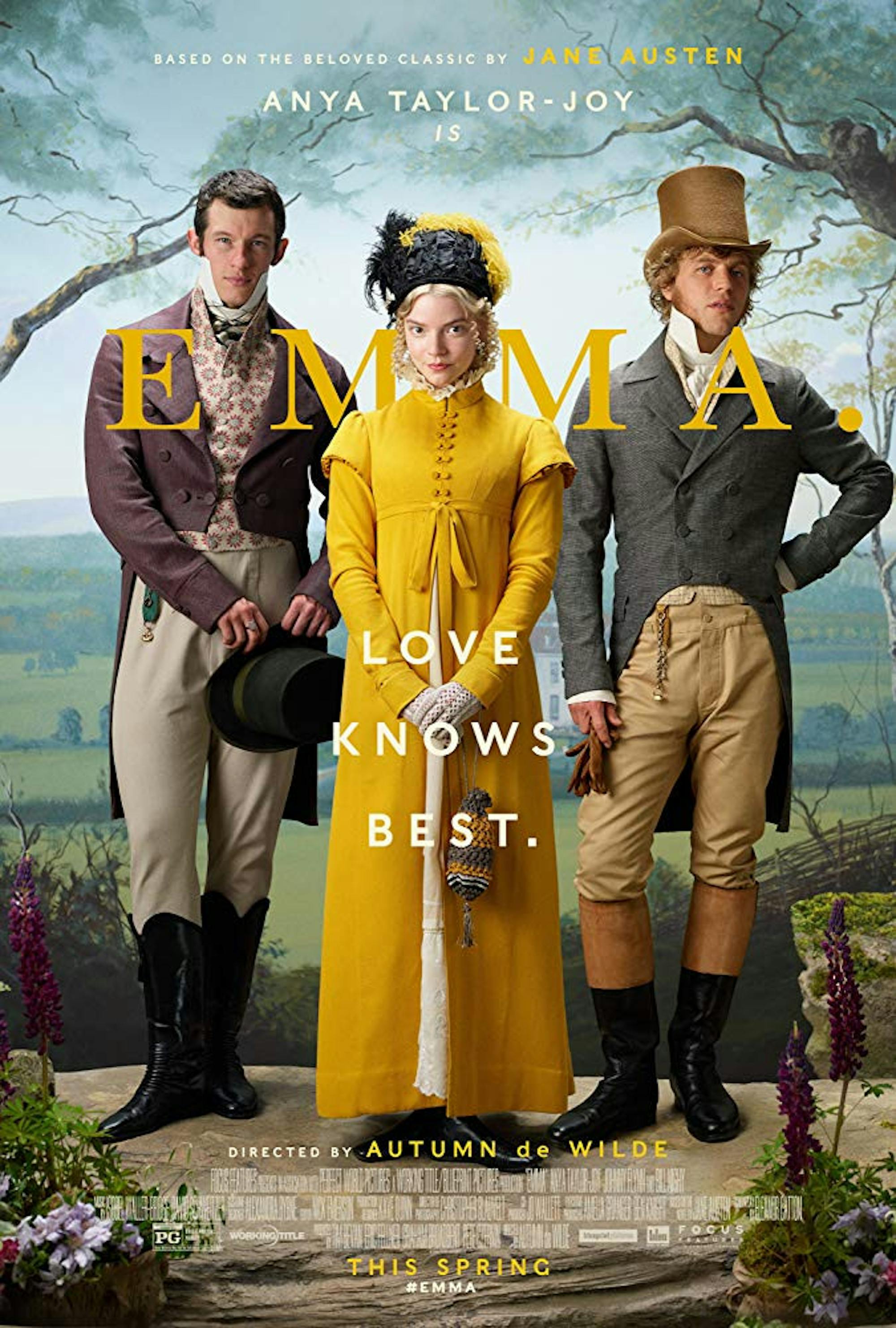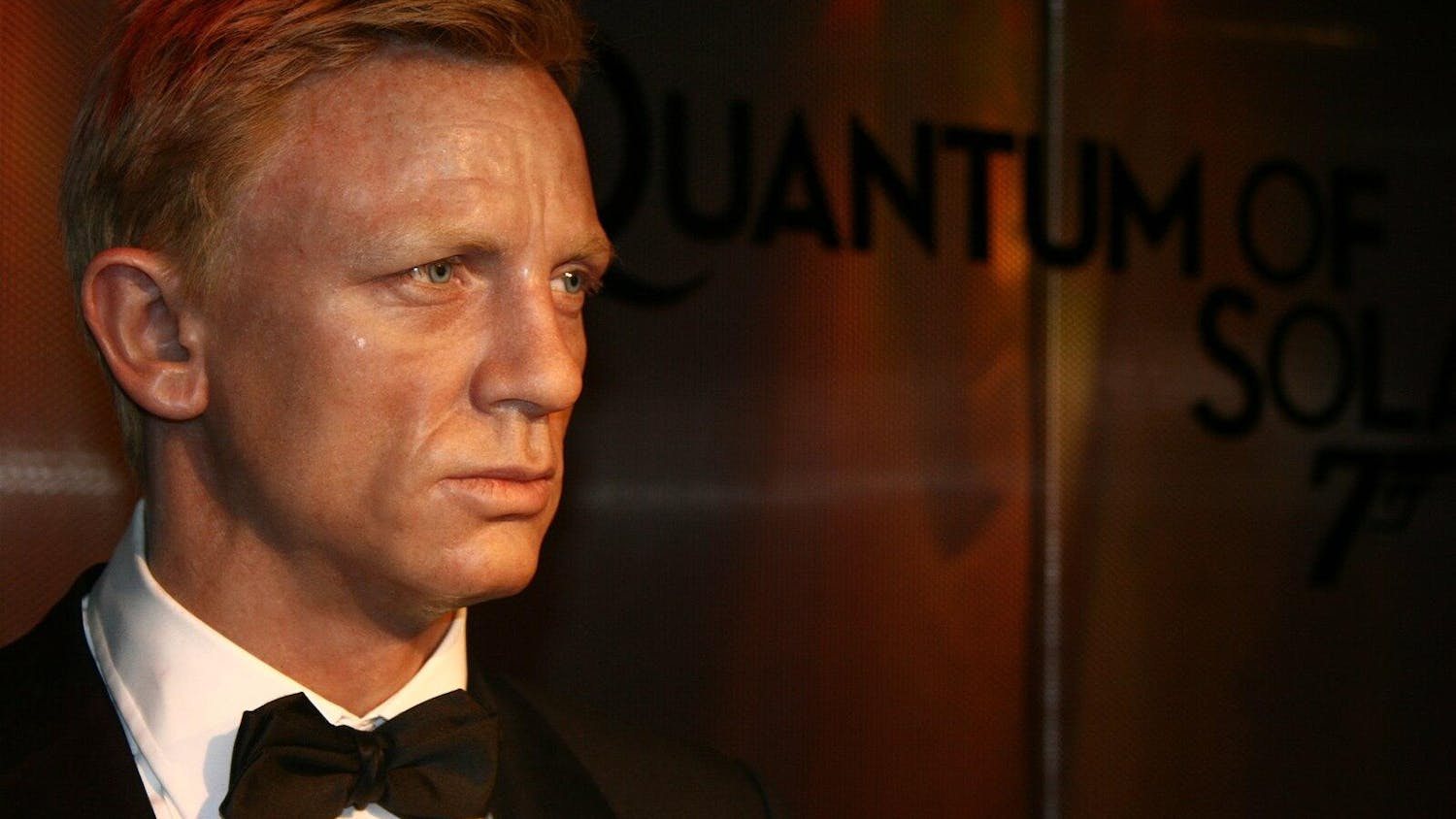Lovers of Jane Austen’s 1815 iconic novel “Emma” — and fans of the coming-of-age film genre — can rejoice at the release of “Emma.” (2020) this weekend. It’s a story we all know in some way (possibly from “Clueless” (1995); a girl who loves meddling in her friends’ love lives but doesn’t have a clue how to approach her own). But this adaptation, helmed by first-time director Autumn de Wilde and starring Anya Taylor-Joy, revitalizes the timeless story for a modern audience. The film is beautifully stylized, wonderfully acted and directed with a clear and crisp vision.
Earlier this week, de Wilde and Taylor-Joy gave a Q&A at a screening of “Emma.” at the Coolidge Corner Theatre, during which they discussed their approach to the adaptation, the complex character of Emma and the film’s gorgeous production design and costumes (and its absolutely scrumptious cakes and desserts). The duo later elaborated on these topics at a roundtable interview.
“I was the first person that was cast,” Taylor-Joy said, “And [de Wilde] had me chemistry read with a few people for different roles, specifically the male roles, but for Knightley [George Knightley, a character in the film], there was only Johnny [Flynn] on the list. And I hadn’t met Johnny before, but from the second that he walked into the room, the relationship was just there.”
Taylor-Joy and Flynn’s connection is visible throughout “Emma.,” like in the moments when the two sit together with Emma’s father, Mr. Woodhouse (Billy Nighy), when they argue throughout Emma’s luxurious mansion and when they meet at the Woodhouse estate during the film’s climactic confrontation.
There’s also an infectious chemistry between Taylor-Joy and Mia Goth, who plays Emma’s best friend and protégé Harriet Smith. But that friendship isn’t just palpable because of the duo’s acting skills; de Wilde told Taylor-Joy that she wanted to cast Goth in “Emma.” before Taylor-Joy revealed that the two are best friends off-screen.
“She showed me a picture of her, and I was like, ‘I was on the phone with her this morning, she’s been my best friend for four years,'” Taylor-Joy said.
It’s just one of the many spooky moments from the creation and production of the film, including a real nosebleed from Taylor-Joy during a scene in which her character is supposed to suffer from one (they originally were supposed to use fake blood, but happy accidents work just as well).
At the core of “Emma.” is both the titular character’s friendship with Smith and her spicy relationship with Knightley, but the latter presents a love trope from Austen’s novel that de Wilde connected with.
“This story is so iconic because of that condition between two people that fight so much [that] they don’t realize that they’re in love,” she said. “And I think that translates across gender and across time periods and ages. It’s so fun to go back to kind of the first book that did it.”
And de Wilde is right; that love trope is timeless. But her decision to set “Emma.” in its colorful, Georgian era is ripe and smart.
“Jane Austen created a satire about the class system, on top of everything else. I was really interested in pointing my finger at the class system as well as all the other layers,” de Wilde said.
There’s a definite focus in the film on the ideas of class and what’s appropriate etiquette, especially during the dance scenes (more on that later).
De Wilde noted that this story could be put anywhere — and it has — but for her, “the opportunity to go into fashion history and design history” and make a true period piece was exciting. “Emma.” captures its Georgian time period with that dedication. De Wilde noted that she was able to ensure that all of the costumes were tailored for their characters and that the mansions they used were updated with wallpapers and paints from that era. But much of her character inspiration — especially for the more intimate moments — came from caricatures.
“I started looking at what the cartoonists of that time period were poking fun at, and they poked fun at the rich, they poked fun at fashion,” de Wilde said.
Those caricatures feed many of the quick, but hilarious moments when we’re alone with characters.
While “Emma.” derives much of its humor from both its source material and those intimate moments, it also features plenty of character quirks and facial expressions (like the most subtle looks that Emma displays when she’s speaking — or rather, being spoken to — by Miss Bates, played by Miranda Hart).
“Very early on, I started pulling these expressions, and [de Wilde] was like, ‘Wait, what you just did, do it, but put it in the scene,’” Taylor-Joy said, adding that the relationship with de Wilde as a director was exciting. “Even the first time that that happened, I was like, ‘Oh, okay, she wants me to play, she wants me to be big and express myself.'”
All of the actors worked in similar subtle ways to understand what their characters were saying, doing and feeling, especially during the dance scenes. De Wilde said that “by the time we got to the ball, [all the actors] were reporting to me” about their looks throughout the scene. It connects to de Wilde’s understanding of the dance scenes as the place for young people of that time to communicate with touches and looks.
That actor and director comfort, especially highlighted by Taylor-Joy’s casual relationship with de Wilde, is nothing short of splendid and refreshing. When Taylor-Joy talked about working with de Wilde from the very first time they met, she noted that the two always worked collaboratively to bring “Emma.” to life. And the film’s liveliness also comes from its music, written by Isobel Waller-Bridge and David Schweitzer.
“I wanted it to seem like the orchestra is misbehaving,” de Wilde said, adding that she drew inspiration for the music from spaghetti westerns. “I wanted there to be distinctive instruments for each character and themes.”
But “Emma.” is ultimately a success because of Taylor-Joy’s interpretation of the iconic character. Emma is a flawed, messy character, but for Taylor-Joy, “that’s what it means to be human.” She commented that Emma is a three-dimensional character who deserved to be played with various layers. Emma's redemption throughout the story is not only fulfilling, but also makes her story much more interesting and relatable. It’s the reason we’ve been reading and seeing Austen’s story for over 200 years and yet keep coming back to it.
“Emma.” open in theaters in Boston this weekend. It opens nationwide on March 6.
De Wilde, Taylor-Joy talk making Austen adaptation 'Emma.'

A promotional poster for "Emma." (2020) is pictured.





